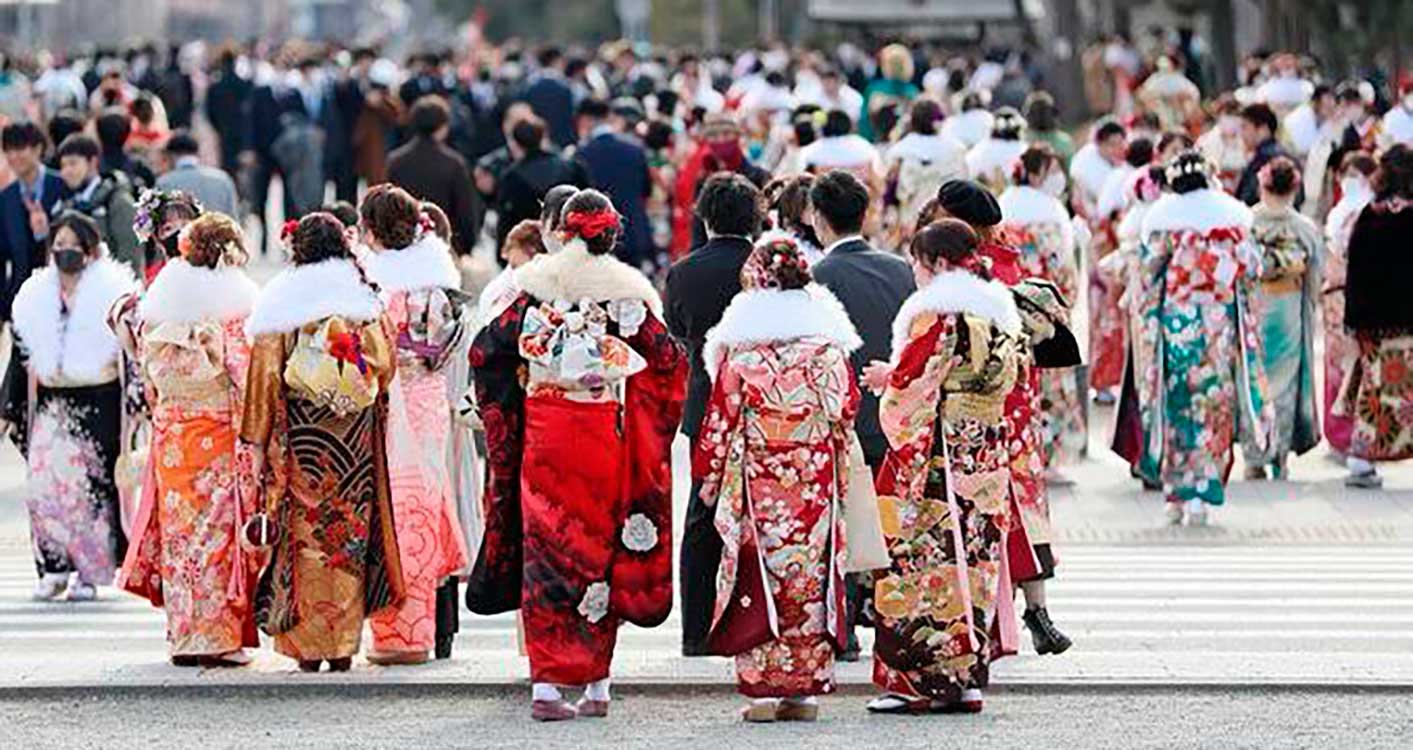Seijin no Hi – Coming of Age Day
When you were a child, did you imagine when you would become an adult and be able to do everything you couldn't do because you were a minor?
In Japan it is no different, but there is one more detail. The Seijin Shiki, the Coming of Age Ceremony.
The Coming of Age Ceremony is a once-in-a-lifetime day and is an important turning point. On this day, men and women turning 20 are declared adults, gaining new rights and, of course, duties.
Being considered adults in society, young people will be able to marry, vote, buy cigarettes and alcoholic beverages, buy a house, car and, of course, live alone.
Girls especially prepare a lot for that day, where they will wear kimonos, often expensive and full of details, needing someone experienced or professional to dress them, make them up and do their hair.
As for the boys, some dress in a more traditional way and others prefer the more Western way with suits and ties.
In Japan, there is a word called 冠婚葬祭 (kankonsousai), which is something like “ceremonial occasions”. Each of the kanji for this word represents a special occasion.
– The 冠 represents the coming of age ceremony.
– The 婚 represents marriage.
– The 葬 represents the funeral.
– The 祭 represents Matsuri, the festivals.
With this, it is possible to get the idea of the importance of “coming of age” since ancient times.
Since the Nara period, the coming-of-age ceremony was known as “Genpuku”, performed by boys aged between 12 and 16. These boys tied their hair up and changed their clothes into an adult style. They also changed their childhood name to a new name and, in addition, wore a crown, which is where the representation in the kanji 冠 (kan) comes from.
Genpuku, which is familiar in period films and soap operas, is also the coming-of-age clothing for boys.
During the Edo period, only aristocrats inherited the ritual down to the last detail, while others simplified it, just cutting the fringe. The genpuku
it was also called kakan and uikoburi.
For girls, between 12 and 16 years old, a ritual called “Mogi” was carried out, in which they used the “Mo”, a garment worn from the waist down and haircuts and hairstyles were also performed on the child to create a more adult.
Nowadays the kimono worn by young women is the Furisode, but there was a time when children could also wear the Furisode. This is because the gesture of waving long sleeves was thought to “exorcise evil spirits” and “ward off bad luck”. Children wore long-sleeved kimonos to protect them from illness and misfortune.
In this way, it seems that the coming of age ceremony in the past was held long before the age of 20. It was only after World War II that the coming of age ceremony began to be held at age 20.
Seijin Shiki, the ceremony that brings together new adults, would have its origins in the “Youth Festival”, held in 1946 in what is now the city of Warabi, Saitama Prefecture. It spread throughout the country and on January 15, 1949, it was established as Seijin no Hi (Coming of Age Day).
The reason why Coming of Age Day was set for January 15th comes from the custom of holding the Genpuku ceremony on the first full moon of the new year.
Later, in 2000, due to the revision of the Public Holidays Law, “Coming of Age Day” was changed to the second Monday in January.
Some cities, districts, towns and villages hold ceremonies in March (when university students are on spring break), when it is easier for people who attend universities in other provinces to participate.
Another interesting fact is that in the city of Urayasu, Chiba Prefecture, coming of age ceremonies are held at Tokyo Disneyland.
Coming of Age Day is a day to celebrate and encourage young people who realize that they have become adults and are trying to survive on their own. New adults should feel proud and those around them should feel blessed.
Did you find it interesting? Want to learn more?
Come with us and SPRING YOUR LIFE.
By: Bijuh Sensei.


